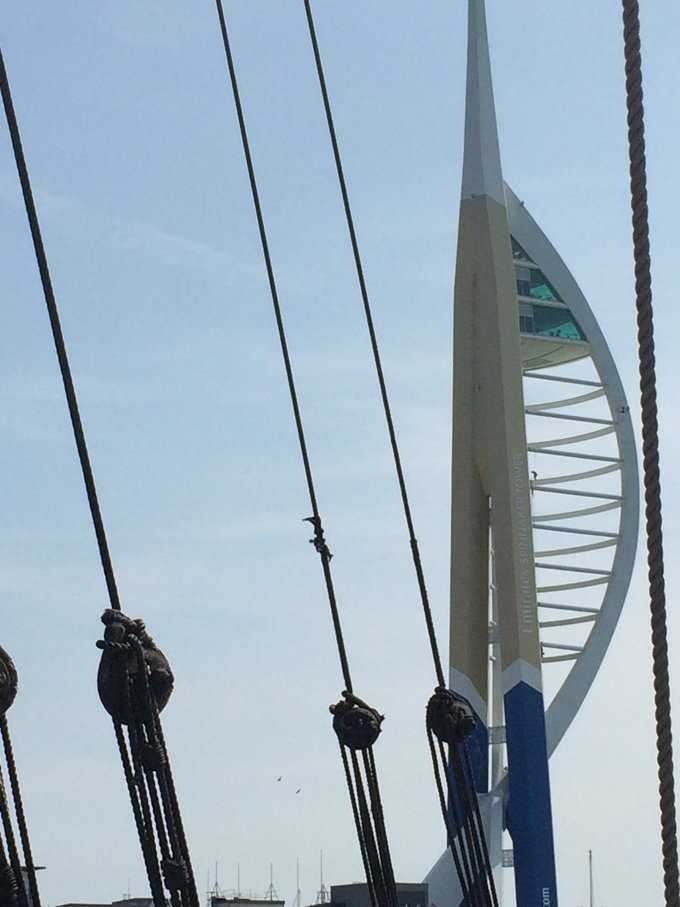Day one of our expedition began radiantly! The British Isles welcomed us with bright blue skies as we sailed along the southern coast of England towards Portsmouth, passing the beautiful white chalk cliffs of the Isle of Wight (not Dover!). After breakfast, as we sailed, we were treated to a talk by National Geographic photographer Alison Wright, who was named National Geographic Traveler of the Year. Alison’s talk was based on her book, entitled Face to Face: Portraits of the Human Spirit. Alison presented stunning photos from her work and travels in Nepal, Laos, and around 150 countries, including a National Geographic book cover, celebrating 125 years of National Geographic. She also shared her experiences photographing the Dalai Lama, including her book on the spiritual leader, A Simple Monk. We were all very moved to hear about her harrowing experience surviving a devastating bus accident on a remote jungle road in Laos, which she captured in her memoir, Learning to Breathe: One Woman’s Journey of Spirit and Survival. Alison’s extraordinary experiences around the world indeed showed us all the enduring strength of the human spirit, and her determination to return to the photography work that is her passion.
Another brilliant talk followed, “The Peopling of Britain and Ireland to the coming of Christianity,” by historian David Barnes. David began by clearing up terminology: Britain is the larger island that encompasses Scotland, Wales, and England, while Ireland is the smaller island to the west. He then walked us through the cultural assimilations that happened among the Romans and Anglo-Saxons--so-called “Barbarians” (Germanic tribes)--on these isles over the last several millennia. He offered illuminating insights into how the varied cultures of Britain are reflected in language today. The word “Wales,” for example, means “foreigner” in the old Saxon language of the southeastern part of Britain. Over time, all the many dialects of the Anglo-Saxons in Britain eventually merged into what became the English language today.
In the afternoon, we had a choice among excursions to three different sites along the coast. Some visited the Portsmouth Historic Dockyard, to tour the beautifully preserved historic ships, the HMS Warrior and HMS Victory, as well as exhibits at the dockyard, part of the National Museum of the Royal Navy. Others chose a walk through the Titchfield Haven National Nature Reserve, a 369-acre protected watershed, to look for the migratory birds that make the reserve their temporary home each year. A highlight was a sighting of an avocet, a wading bird with an upturned bill, plus the bonus of a chick! A third group headed to the English countryside, to visit Southwick House, which served as Allied headquarters during the D-Day landings. This was a very appropriately timed excursion, as today is the anniversary of D-Day, June 6. From there, that group went on to Fort Nelson to see the Royal Armoury collection of artillery and historic cannons. Remarkably, this included Sadaam Hussein’s Big Gun, which was thankfully never used.
As we sailed from Portsmouth in the evening, we enjoyed today’s recap, and then the always festive Captain’s Welcome Reception before another sumptuous dinner by Chef Lothar.






